This post is part of James Bond January, being organised by the wonderful Paragraph Films. I will have reviews of all twenty-two official Bond films going on-line over the next month, and a treat or two every once in a while.
Licence to Kill is the Bond movie that almost killed the franchise. The gap between the release of this movie in 1989 and GoldenEye in 1995 is the longest period that the film series has been left dormant. Although the legal issues surrounding the series hardly helped ensure the British secret agent’s return to the big screen, there’s also the fact that this movie was something of a box office dud in the States. (Although it was quite successful elsewhere.) Licence to Kill is perhaps the most divisive of the Bond movies – even more so than On Her Majesty’s Secret Service. Detractors see it as a poor attempt to emulate Miami Vice, indulging in ridiculously over-the-top violence and darkness for the sake of darkness. Fans argue that the movie is a lot closer to Ian Fleming’s original novels, and feels more like the recent relaunch of the franchise – it’s a perfect bedfellow with Casino Royale or Quantum of Solace. My opinion is somewhere in the middle.
There is a definite sense of insecurity about this instalment. The film franchise was just shy of its third decade, but already the anxieties of middle age were setting in. As if awakening from a stupor, the Roger Moore years were looked back upon with a sense of awkward shame and more-than-slight embarrassment. As entertaining as the folly had been, Bond was losing ground. In the eighties, Bond found himself competing for an audience share against movies like Lethal Weapon and Die Hard, movies with a much harder edge and a more jaded perspective.
Although the movie’s box office totals were a bit of a disappointment, there are several mitigating factors. Though the age rating – the film was PG-13 in the States and 15 in the UK – gets a lot of the blame, the truth is that there’s a lot more that can explain it. The film’s last minute name change from “Licence Revoked” couldn’t have helped (the rumour persists that American audiences didn’t know what the work “revoked” meant, but it was actually changed because it made the movie sound like Bond was losing his driver’s licence). The timing of the release was also a bit of a disaster, following films like Ghostbusters II, Lethal Weapon II, Back to the Future II, Batman and Indiana Jones and the Last Crusade.
Although The Living Daylights had been a somewhat more serious film than the movies which came before it, Timothy Dalton’s second turn in the role of the iconic spy was a solemn and serious affair. Bond was no longer a happy-go-lucky secret agent in a magical world where he could banter with enemies dispose of foes in hilarious fashions, this was a world that was populated with drug dealers and serial killers, where the villain’s chief henchman wasn’t a bloke with metal teeth or a funny hat but a guy who “used to be with the Contras until they kicked him out.” It begins with Bond’s friend having his legs fed to a shark, following the murder of his wife, and it ends with Bond setting the bad guy alight – not with a cold witticism or a smart pun, but a moment of silent catharsis.
Some of the movie seems overly cynical. It is, at points, like Bond has wandered out of his own series and into an episode of Miami Vice. I’m not sure why Felix, a CIA agent, was running point on a DEA operation – other than that we really needed a drug dealer as a bad guy in order to ground this movie. The film is brutal and unnecessarily bloody – just consider, for example, the famous execution by decompression chamber. At times, it feels like it’s just pushing the boat out for the sake of pushing the boat out.
On the other hand, it’s perhaps a lot closer to the spirit of Ian Fleming’s books than a lot of what came before. Although the title of the film does not come from any Fleming’s books or short stories, the screenplay borrows liberally from any number of Fleming’s work. For example, the shark-feeding scene comes from Live And Let Die, perhaps it would have felt out of place in the Roger Moore film. In fact, both Timothy Dalton and Robert Davi read Fleming’s Casino Royale to get into character – and both do great work here.
Dalton plays Bond as a human being here, which is something quite different from what we’ve seen in the movies since Diamonds Are Forever. Moore made Bond a larger-than-life parody of a secret agent, a man too cool to actually exist. Dalton, on the other hand, recognises that there must be a human being underneath it all in order for it to work. Even the scenes at the start, cementing the friendship between Felix and Bond, feel more organic than any interaction the character has had in years. “Switch that thing off, Felix,” Bond chides the groom in the manner of a close friend, “You know you have a house of guests waiting.”
There’s a moment when On Her Majesty’s Secret Service is referenced, as Felix’s bride asks Bond if he’s next to be married – the understated look on Dalton’s face is perhaps the classiest acknowledgment of that film in the series, as (even if we’d never seen the movie) we don’t need Felix’s exposition that Bond “was married once.” More than Roger Moore visiting a grave at the start of For Your Eyes Only, that scene underscores how much of a loss Tracy was.
I remarked in my review of the earlier film that Dalton isn’t the strongest at the pantomime aspects of Bond. His one-liners are often stilted and he doesn’t necessarily do the mot convincing love scenes. This movie plays to the actor’s strength. The few one-liners that Bond utters are stone cold rather than especially witty and his love scenes here seem a lot more organic. There’s a moment when, on a speedboat, Bond accidentally honks the horn by pressing his lover up against it – the pair chuckle, in what seems like a lovely little moment that Moore could never have pulled off (we would have cut away and heard the horn sounding a few more times before we cut to them on the morning after).
Dalton’s Bond is a flawed character, but the movie embraces his flaws. While Connery and Moore were at times incredibly sexist, this marks the first time I noticed the movie calling Bond on his attitudes. It’s understandable, as we’re moving closer to the modern day, and it’s nice to see. Bond – as played by Dalton – is a short-sighted, selfish bastard. “We’ve got laws in this country too,” one of Felix’s friends warns him as he begins playing judge, jury and executioner to Sanchez’s men. In response to his cavalier attitude, M assures Bond that MI6 is “not a country club” – perhaps a direct reference the excesses of Moore’s time in the role, when it seemed like the spy organisation was basically a gentleman’s club Bond frequented?
Here Bond’s plan for revenge ruins a CIA sting operation designed to catch Sanchez. It’s one that the agent in question had “been setting up for years”, but Bond’s hot-blooded desire to avenge his friend and colleague single-handedly runs the undercover sting operation aground. The movie acknowledges that Bond has a significant amount to answer for (perhaps even quite a few dead bodies caught in the crossfire), as he remains singularly focused on dismantling Sanchez’s drug smuggling operation, with little or no regard for the consequences.
In many ways, the movie feels like a preamble to GoldenEye. Pierce Brosnan’s debut in the role worked so well because it picked apart the franchise and the character – daring to ask if he had a place in the post-Cold War era. Although Licence to Kill flinches as it attempts to directly address the issues, it seems to acknowledge that there are some flaws with the Bond character when held against modern society. When he introduces the Bond girl as his “executive secretary”, she asks, “Why can’t you be my executive secretary?” Bond’s answer is a bit of fluff, but it’s nice to see him called on it. Later on, when she finds out Bond slept with the second Bond girl of the film, Q tries to defend him. “Don’t judge him too harshly, my dear,” Q pleads. “Field operatives must often use every means at their disposal to achieve their objectives.” She correctly calls this as “bullshit.” Bond certainly didn’t need to sleep with her, he just did it because he wanted to and could find an excuse for it.
To be entirely honest, although the absence of the clichés and tropes we’ve come to expect from a Bond film makes the movie feel like the red-haired step-child of the franchise, it’s also somewhat refreshing. There are no ridiculously elaborate death-traps for Bond to escape from and the villains seem (mostly) immune from the stupidity which had infected most of the earlier Bond villains. “Guy must have drowned, Mr. Crest!” a henchman declares after Bond goes overboard. However, the henchman is too smart to fall for that one, “Don’t be so sure.”
The lack of these elements certainly doesn’t mean that there’s a shortage of action. Director John Glen doesn’t get enough credit for the fantastic stuntwork he supervised on the series. Here there are several wonderful Bond action sequences which showcase the series’ wonderful capacity for physical stuntwork – be it the plane “fishing” from the pre-credits sequence or Bond hijacking a sea-plane mid-flight or the climactic oil-tanker chase, there’s a lot to love here for action junkies.
Even Q gets in on the action, somewhat dispelling the myth that Q is responsible for some of the more outlandish moments in the franchise. Q plays a larger part here than usual, providing Bond with a selection of trademark gadgets. None of these undermine the gritty feel of the film at all – it certainly feels more organic than Live And Let Die, the Q-less film which featured only a magnetic watch as the Bond gadget. However, the character of Q took the fall for the franchise’s excess, and he’s been cut entirely from the recent relaunch.
There are other touches which confirm (quite effectively, in my opinion) that the viewer is watching a Bond film. The villain’s gimmick – selling drugs through a self-help televangelist, with various numbers representing customers and prices – is a very Bond plot device, but not a campy one. It’s exactly the sort of thing that Fleming himself would have come up with. It is cool, but grounded.
I have to admit, I love Robert Davi as Sanchez. I think he’s on the shortlist of my favourite Bond villains. Maybe it’s because he’s the only Bond villain I can think of that I actually hate. He doesn’t seem like he’d be a charming dinner guest, he actually seems like a crazy and brutal psychopath – which makes a refreshing chance from the over-the-top antics of people who want to create a new garden of Eden or build a satellite made from diamonds. Sanchez feels “real” rather than a collection of quirks or a composite of villainous traits. I like the little touches, like his sense of loyalty, despite his barbarism – he refuses to “deep six” his bribed DEA official, for example, stating, “I made a deal with this guy, and I’m gonna keep my word.” It’s great that he actually falls apart as his plan does – despite his fixation on loyalty, when push comes to shone he’s more than willing to ignore the “deal with the Orientals.” Davi is just great in the role.
It’s also cool to see Benecio Del Toro pop up as his psychotic henchman Dario – at the age of 22, Del Toro was youngest actor to play a Bond villain. He’s wonderfully creepy despite not really having much of a hook beyond “likes knives and is psychotic.” The character gets perhaps the movie’s best death sequence.
The theme song is actually pretty cool. It doesn’t have the sheer, ridiculous over-the-top eighties charm of, say, A View to a Kill, but it’s wonderfully understated (much like the film itself). The music as a whole is much better than it has been for the past few Bond films, with the series moving away from over-produced pop and back towards the gracefully sophisticated orchestral scores.
I like Licence to Kill. The movie has a fair few problems – the most obvious one being that it is trying a little too hard to be darker or edgier – but it’s also refreshing. It doesn’t feel like it’s so plainly playing to a formula, and it treats Bond as more complex than he has been in quite some time. Despite the inherent “eighties-ness” of the focus on the drug trade and the gratuitous violence, the film has aged quite well. It’s not as effective as GoldenEye or Casino Royale, but one can trace the roots of those films back to this instalment.
We’ve got full reviews of all of Timothy Dalton’s Bond films, if you want to check ‘em out:
- The Living Daylights
- Licence to Kill
The following bloggers have reviews of this film as part of James Bond January:
Filed under: Non-Review Reviews | Tagged: casino royale, film, GoldenEye, ian fleming, james bond, james bond january, Licence to Kill, Movie, non-review review, pierce brosnan, review, robert davi, Roger Moore, timothy dalton, United States |















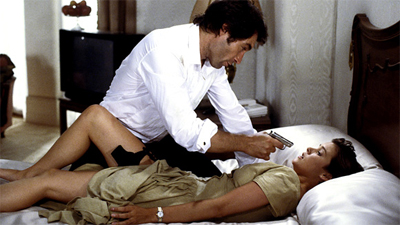

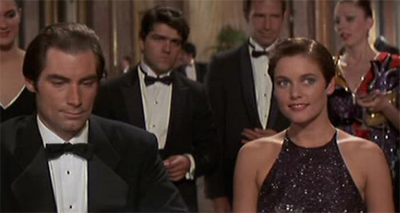
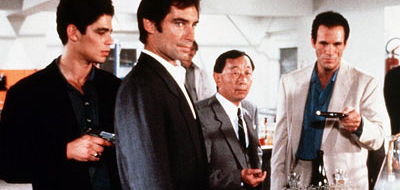
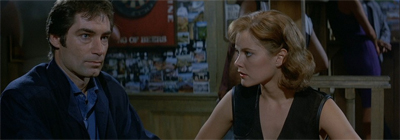

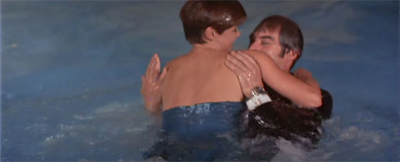
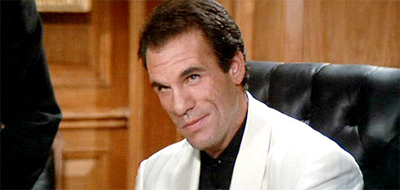
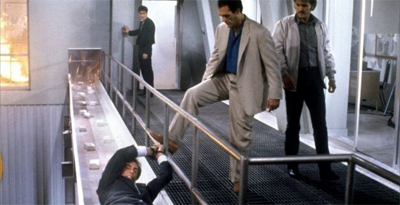





Solid review. You match my sentiments both on its strengths and its weaknesses alike. It was an early stroke of maturity for the character (on film), and Dalton – despite his poor track record and rough delivery – is a far better literary Bond than Moore.
Thanks Stu! I think he just has more depth and seems more “real” than Moore, without seeming as melancholy and dull as Lazenby.
licence to kill best bond film ever
I’d respectfully disagree, but it is better – I think – than most give it credit for. I could easily see it as a Daniel Craig Bond film.
Why don’t you show Talisa Soto?
I don’t know. Wasn’t a conscious choice.
I will never understand the “detractors” who see License To Kill as “Bond does Miami Vice” – “oh, it’s about drugs, just like Miami Vice.” Well, yes, but that’s not because License To Kill was imitating Miami Vice, it’s because they were both set in an era in which the war on drugs was an enormous deal. Miami Vice didn’t invent that.
Frankly License To Kill reminded me more of Clear and Present Danger (which was written the same year), in that the villain is a drug kingpin who operates at a quasi-governmental level, is so powerful that all the usual police methods are useless against him, and isn’t brought down until the black ops community (in the form of Bond in this case and the CIA, Air Force and Green Berets in the book) takes the gloves completely off and treats him like an enemy combatant rather than a police problem.
If the movie was simply about Bond taking down street dealers in Little Haiti one at a time, I’d understand, but as it is, Sanchez was just as formidable, world-class and worthy of Bond’s attention as Goldfinger or Elliot Carver.
(I feel the same way about the criticism of Live and Let Die as somehow lowering Bond by doing blaxploitation, and for the same reasons).
License to kill is actually my favorite Bond film. I think Robert Davis is the best Bond villain because he does have layers. He is not just interested in world domination and seems to actually have an affection for the people working for him and it seems to pain him when he has them killed.
The stunt work is excellent as you mentioned and Dalton brings such a physicality to the role. I like Roger Moore, but it pains me that he got 7 films, and Dalton only got 2.
I really like License to Kill, although it is perhaps a little too “off-template” for me to rank it as my favourite, personally. But I really loved Davi as a drug kingpin – who really is the closest that that you could come to a real-life Bond villain in the seventies or eighties. I do agree Dalton was robbed.